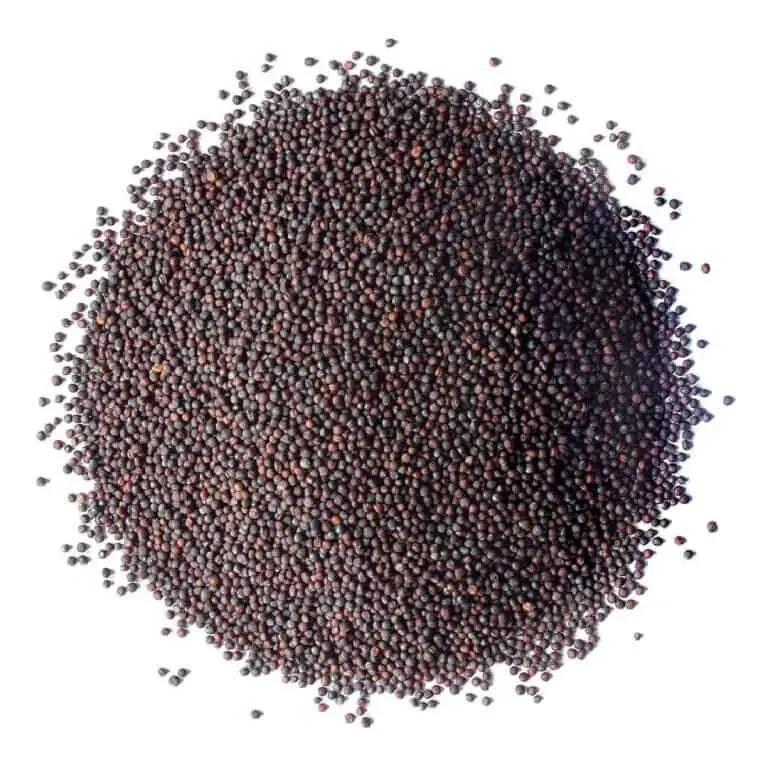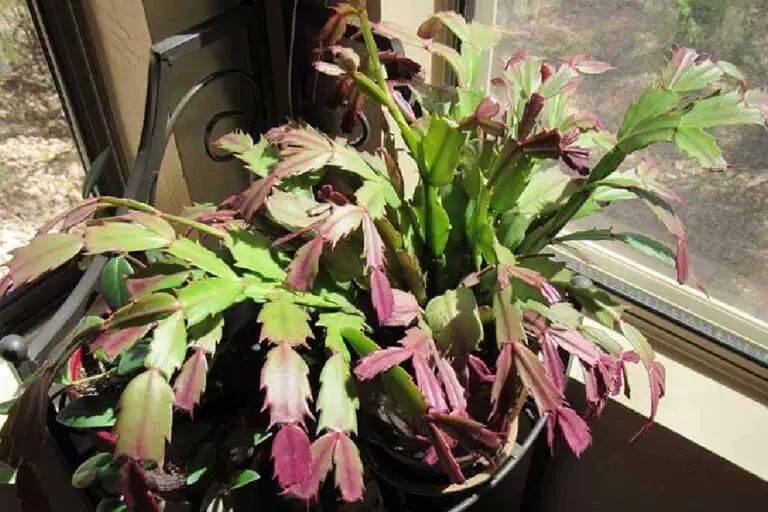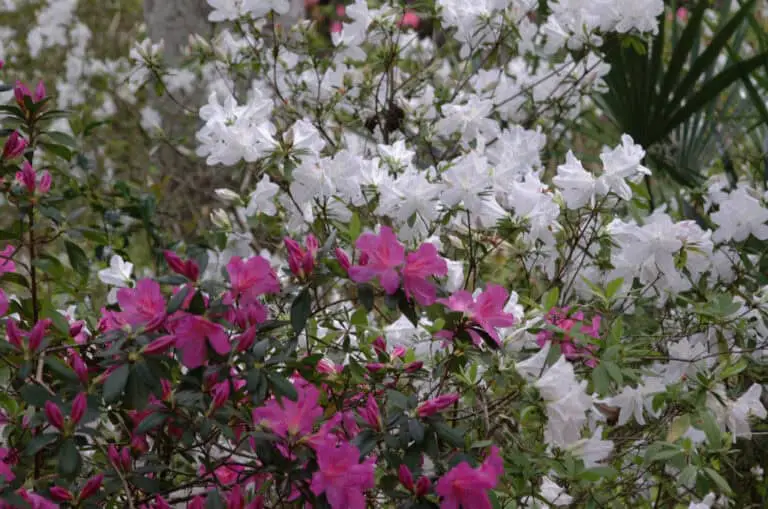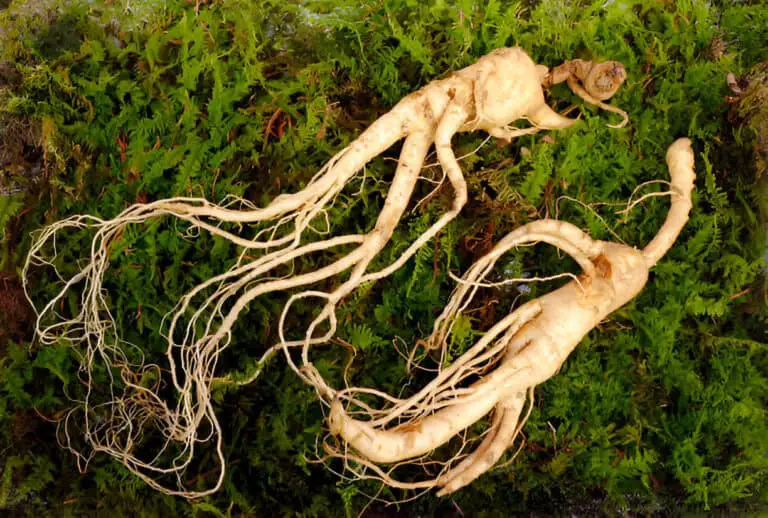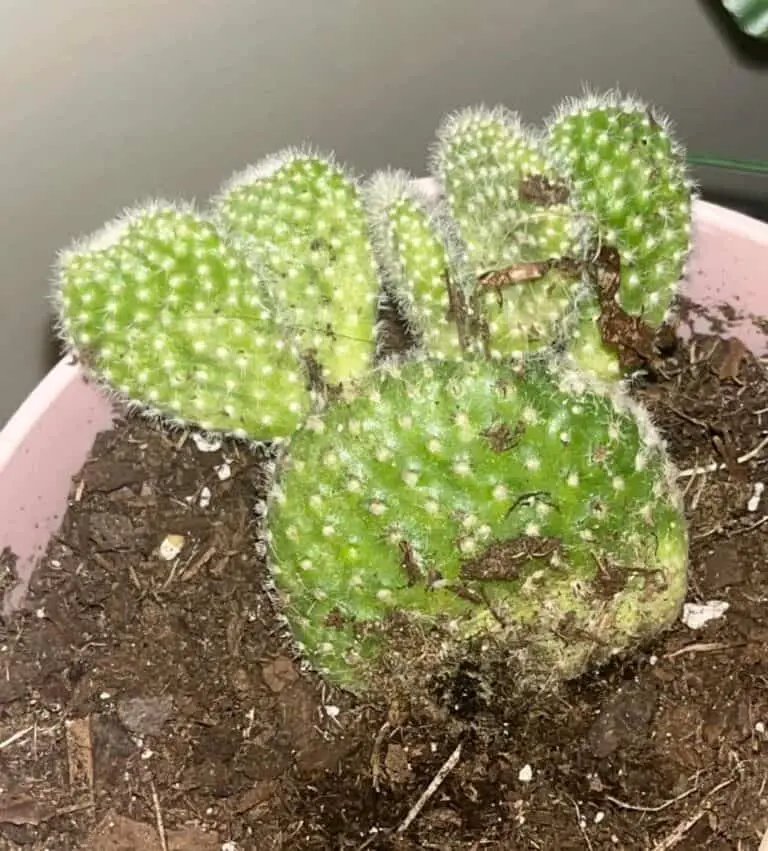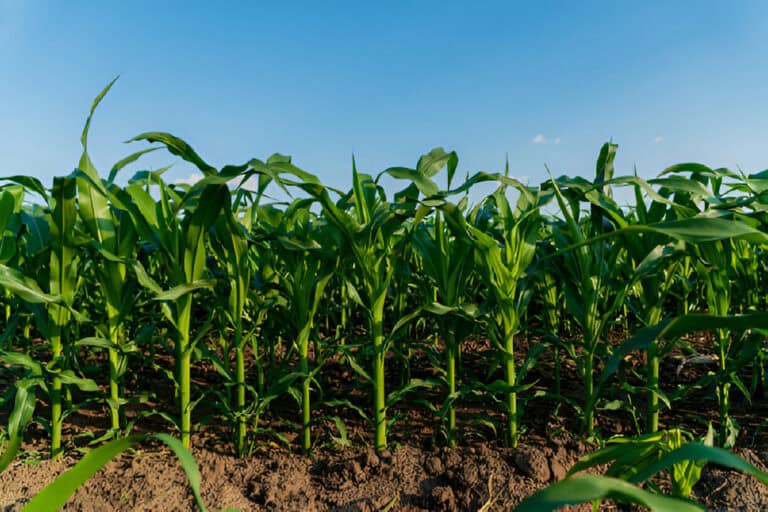Troubleshooting Black Leaves on Your Jade Plant: Causes and Fixes
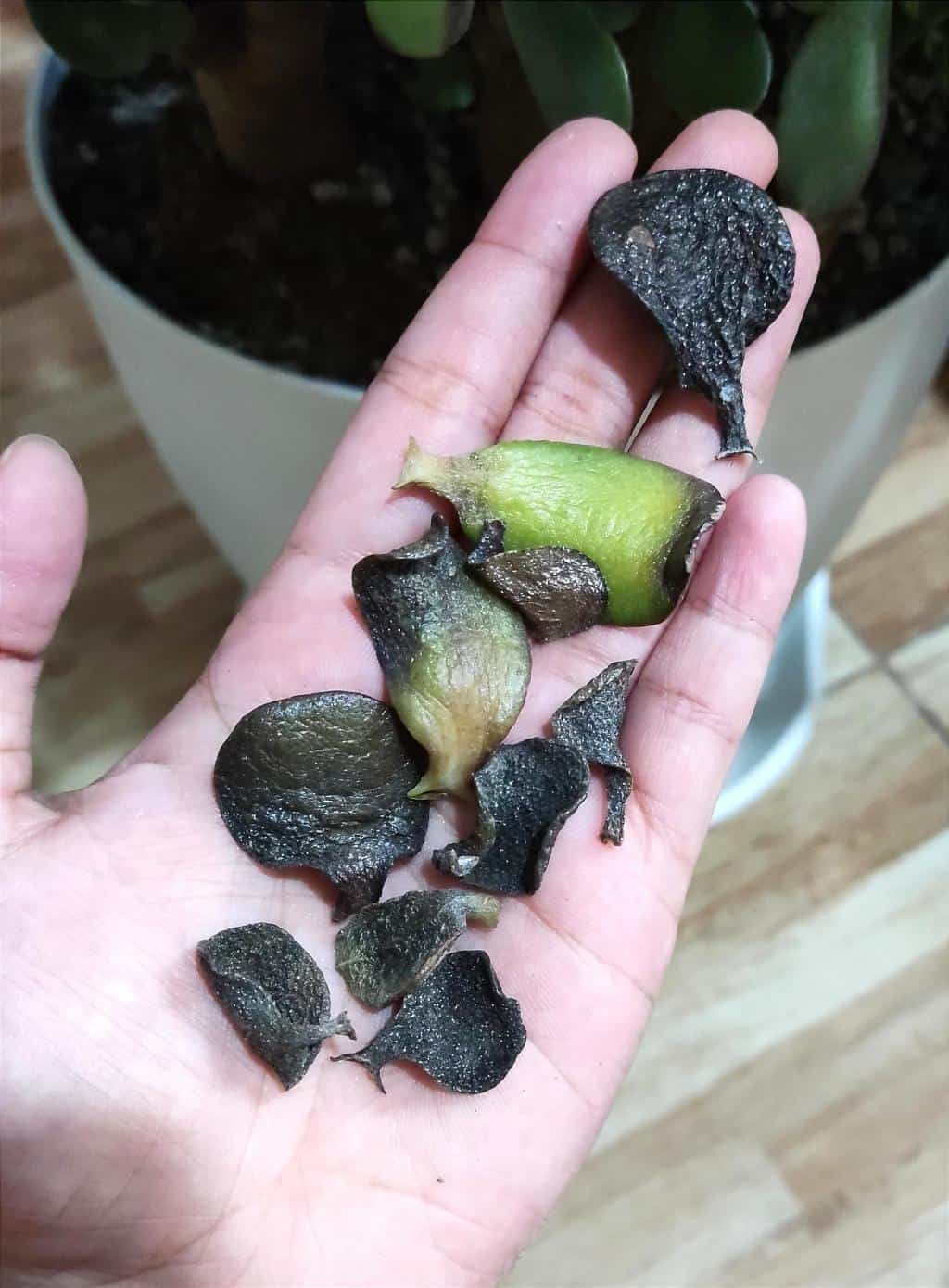
Jade plants are popular houseplants worldwide due to their low maintenance and ability to adapt to different environments. If you have noticed your jade plant leaves turning black, however, this will primarily be down to root rot but can have other causes as well.
In this article, I will be talking you through the reasons why jade plant leaves turn black and how you can fix it!
The Jade plant (Crassula), also known as the money plant or lucky plant, is a succulent, which means it can last long periods of time without water. They are native to South Africa, where they grow on rocky hillsides with infrequent rainfall.
Because of their native environment, jade plants are susceptible to overwatering. This can often lead to problems such as root rot, and you will notice your jade plant leaves turning black.
Jade Plant Leaves Turning Black and Falling Off
A jade plant leaf turning black is a common problem amongst houseplant lovers! Often this will lead to the leaves falling off, shriveling, or dropping. If the issue isn’t fixed then you will be left with a dying jade plant, and nobody wants that!
So let’s get on working out why your jade leaves are turning black!
Black Jade Leaves Due to Root Rot
The most common reason your jade plant is turning black will be down to root rot. This is a horrible disease in which the roots of a plant rot and decay. If you notice your jade plant leaves turning black and falling off, then you will want to check the roots immediately!
Lift your crassula plant out of its container so you can clearly see the roots. Healthy roots should be white and firm. A plant suffering from root rot will have black or brown roots with a mushy and slimy consistency.
Jade plant root rot can occur for a number of different reasons, such as overwatering, using the wrong soil, or using the wrong container. If you have root rot you might notice your jade plant falling over.
Overwatering
An overwatered jade plant is the main reason root rot will occur. Jade plants are used to dry soils, so if your soil is soggy and wet, chances are you have overwatered your plant.
It’s hard to tell you how often you should water a jade plant because there are so many different factors to consider, such as temperature and location.
As a rule of thumb, you should only water your jade plant when the soil is completely dry. When you do water, give it a thorough soaking until the water is pouring out of the drainage holes. Throw any excess water away so that your plant isn’t left sitting in a saucer of water.
Overwatering is the main cause of jade plant leaves turning black, but other symptoms will include the leaves turning yellow, mushy and soft leaves, and eventually the leaves falling off.
Slow Draining Soil
Another reason you Crassula can get root rot, which in turn leads to black leaves on a jade, is using the wrong soil type.
As mentioned above, jade plants are native to South Africa, where there is little rainfall. This means that they need a well-draining soil, with a blend of organic and inorganic material.
You can make your own soil mix, but I tend to buy ready mixed soil, just because I find it easier. I have tried and tested a fair few succulent soils and found that the below work best for a jade plant.
Organic Succulent and Cactus Soil Mix, Fast Draining Pre-Mixed Coarse Blend, 4 Quarts – affordable and great quality, this is usually my go-to for succulent soil. The organic blend is optimized for a pH of 5.5 which is ideal for a jade plant. The soil is also lightweight, fast draining and contains 25% perlite.
Ingredients: 75% substrate, 25% perlite, low fertilizer.
Hoffman 10410 Organic Cactus and Succulent Soil Mix – alternatively, Hoffman is a well-recognized brand name and I have no complaints about their organic succulent mix. The soil contains both perlite and peat, which makes it a well-draining mix. It also contains limestone which works as a great pH balancer.
Ingredients: Canadian Sphagnum Peat moss, Reed Sedge Peat, Perlite, Sand, Limestone
Of course, these are just my preferences, and if you don’t want to order online, then most local garden centers will sell a succulent and cactus soil mix that will work just as well.
When purchasing a well draining soil for jade plants, the ingredients you should look out for are perlite, peat moss, and limestone. These will make for a well-draining soil that your jade plant will love!
Succulents like a slightly acidic soil and limestone are ingredients that are used to balance out the pH level. Alternatively, you can try using coffee grounds on succulents.
Using the correct soil will stop your jade leaves from turning black and will keep them healthy and happy!
No drainage holes
The final cause of root rot and jade leaves turning black and falling off is using a container with no drainage holes.
As mentioned above, jade plants hate soggy, wet soil. If you are using a well draining soil but a container with no drainage holes, then chances are your Crassua plant is going to be left sitting in water.
You should always use a pot or container that has drainage holes in the bottom. Any excess water that seeps out of these holes when watering should be thrown away immediately.
Black Jade Leaves Due to Humidity or Heat Stress
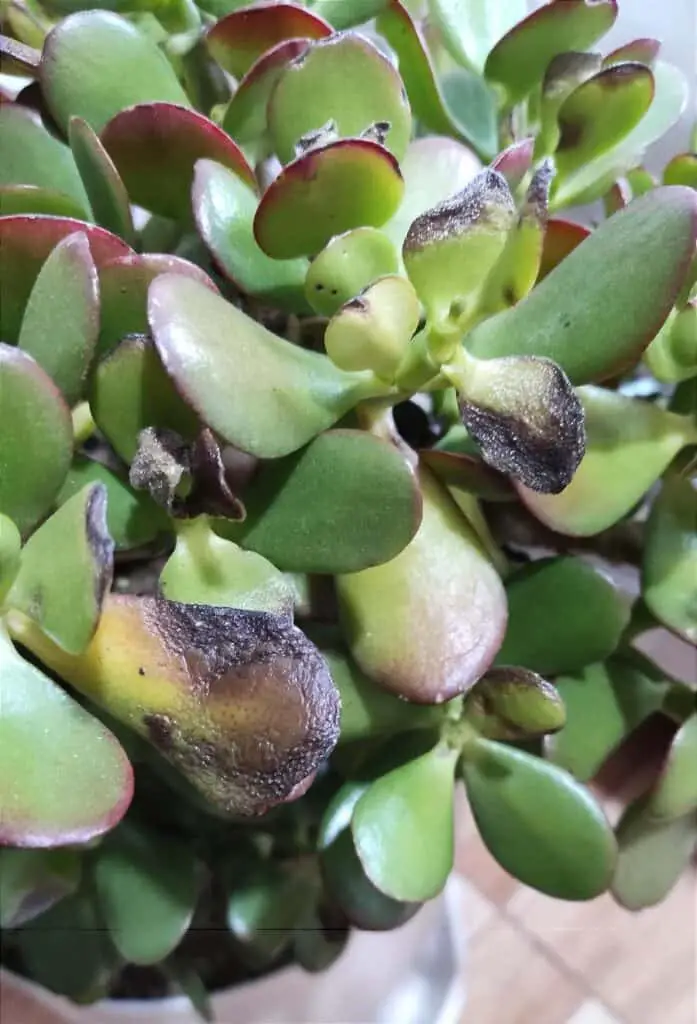
We have discussed jade plant leaves turning black due to root rot, but unfortunately, that is not the only cause of black jade leaves! Humidity and heat stress are also causes of blackened leaves.
As I mentioned above, jade plants are native to South Africa, usually found on breezy mountainsides. This means that they are accustomed to low humidity. If you live in a very hot, humid area then this could be a cause of the leaves becoming black and discolored.
There are a few living conditions in which a jade plant can be too humid. In particular, wherein your home the jade plant is living. Bathrooms and kitchens, for example, can get hot and steamy when showering or cooking. If your crassula is placed in one of these rooms, you should think about moving it to another area of your house.
Naturally humid climates can cause Jade plants to be more at risk of turning black which increases the importance of full sun and placing Jade in a breezy location.
Black Jade Leaves Due to Pests
Ergh. Another reason you may find your jade plant leaves turning black is pests. Jade plant bugs are a nuisance and can cause a lot of issues. In particular, you should watch out for mealybugs, spider mites, scale and aphids.
Normally, you will notice white spots on your leaves before they turn black. An infestation spreads like wildfire so if you think your jade plant has pests, then you should remove it away from any other houseplant to avoid it spreading.
You will want to get rid of an infestation quickly. Most pests will suck the sap out of your plant’s leaves, which is why you’ll find them eventually turning black. To get rid of mealybugs and aphids, you’ll need to dilute Isopropyl Alcohol 70% with water and spray your jade plant all over. For spider mites, Neem Oil will do the trick!
If you think your jade plant leaves turning black are due to pests, you’ll want to read more on jade plant bugs before treating them.
Black Jade Leaves Due to Fungi
A less common reason why your Jade plant is turning black could be due to a fungal disease.
This works in conjunction with humidity, where fungal infections can grow more readily than in dryer locations.
If you have a fungal disease, then you’ll notice black spots on a jade plant, over the whole leaves turning black. If you think that fungi are the cause of blackened leaves, then you will need to purchase a fungicide spray and move the plant away from any other houseplant.
Black Spots on Jade Plant Leaves
If you’ve noticed dark spots on a jade plant, or black spots on its leaves, then this could be because of a number of problems.
Overwatering, sunburn, pests, and fungi can all cause black spots on jade leaves. You will want to get the issue fixed as soon as possible so that the spots don’t spread. Unfortunately, sometimes these black spots can be permanent and will be difficult to get rid of, even if you do fix the cause.
The most common reason for black spots on a jade plant is humidity and overwatering in the winter months. Sometimes, general injury can also be a cause of black spots; for example, if you have a cat in your home, that may have knocked it over!
How to Fix Black Leaves on a Jade Plant
Depending on what the cause of your jade plant leaves turning black, depends on the fix! For example, if it is because of bugs, then you’ll need to buy the correct treatment to be rid of them.
If the wrong soil is the cause of blackened jade leaves, then purchasing a well draining soil and repotting is the cure.
If however, root rot is the cause of jade plant leaves turning black, which most commonly is, then you will need to either repot or propagate, depending on how bad the root rot is.
If your jade plant is at the beginning stages of root rot, then you should be able to save the plant by following 4 simple steps:
- Gently lift your jade plant out of its container and remove any soil surrounding the roots. Do a good inspection to see what parts of the roots look healthy and which parts are infected. Healthy roots are white and firm, rotted roots are black and slimy
- If there are still a reasonable amount of healthy roots left on the plant, then the next is to cut away any roots that are infected. Cut right up to the white healthy parts of the roots because if you leave any of the infected parts, it will continue to spread. Make sure you snip away all of the brown roots and keep in mind a rough estimate of the percentage of roots you are cutting away
- Next, you need to cut off some of the leaves and branches. This is because your plant now won’t be able to support as much plant matter as it used to. Cutaway a similar percentage to black roots. Of course, you’ll want to start with the blackened leaves
- Once you have completed the above steps, then repot your jade plant with fresh soil
If however, the root rot is in its late stages and you can’t save your jade plant, then you will have to propagate from a cutting and start again. You will need to find healthy leaves to cut from, there is no point trying to propagate with the leaves that have turned black.
- Select a healthy branch on your jade plant that is 3-4 inches long and use it for the cutting
- Allow the cutting to dry in a warm, dry spot until a callus develops, usually within 1-2 weeks. This is to prevent any disease carrying over
- Once dried, place the cutting into a pot with your potting soil and water sparingly until the cutting has taken root
Jade Plant Leaves Turning Black, the Last Word!
I hope this article has helped you understand why your jade plant leaves are turning black. As a quick recap, we have discussed a number of different reasons why your jade has blackened leaves such as overwatering, using the wrong soil, using a pot with no drainage holes, root rot, humidity, pests, and fungi.
We also touched upon why you might find black spots on a jade plant and how to stop your jade plant from turning black.
If you have any questions, then leave a comment and I will get back to you as soon as I can.

